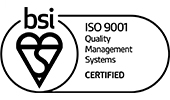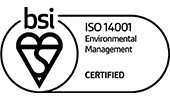The pandemic forced many companies into an experiment with agile working they might otherwise have resisted. For many, it has been an unexpected success, improving productivity and the work life balance of employees. As such, broader adoption of agile working now seems inevitable, but this means offices will need to adapt.
Forward-thinking landlords are well-aware of the need to reconfigure office space. They know that that the new generation of office space will need to facilitate collaboration. They recognise the need for buildings to be ‘green’, using renewable energy where possible, reducing toxic materials and eliminating pollution. Many are already working with tenants to understand their changing needs better.
Landlords are also looking more closely at how they can make these changes tax efficiently. The new regime of super-deductions allows them to make these fit-outs at far lower cost. This has a number of advantages: lessees save the significant cash expenditure associated with new development at a time when many are under financial pressure. If landlords are willing to do the heavy-lifting, it makes the building more appealing to high quality tenants. We see landlords increasing their yield because of the uplift in square footage rates associated with greener spaces that are better-adapted to tenant needs.

The office of the future
While the post-pandemic working landscape is still settling down, it is possible to draw some early conclusions about the future for the office. Nella Pang, director at property consultancy Omega RE, says the health and wellbeing of employees is a key focus and is becoming as important as the financial health of the organisation.
“To understand the future of offices and what tenants want, we need to understand what individuals want and need from their workplace. After months of working remotely many of us are yearning for social interaction with our colleagues, friends and clients. Many studies report that people want face to face interaction, a place to collaborate, a place to build a culture, reduced occupational costs, reduced commuting times and reliable IT.
Health and wellbeing for individuals is currently driving change and businesses are exploring ways to best serve their employees. The war for talent is intensifying. Employers are faced with a situation whereby location and cost is no longer the most important factor in attracting skilled employees. Technology is also transforming many organisations with the digital revolution affecting the way businesses operate.”
While the post-Covid working landscape is yet to emerge in full, most studies suggest employees want to be back in the office two to three days a week. Office time is likely to be used for collaboration. Kevin Mashford, sales director at Paramount Interiors, says “the hybrid model is something that is becoming increasingly popular post-pandemic and has a range of benefits for both teams and business owners. 68% of global organisations are planning to experiment with hybrid work, allowing employees to work partly in the office and partly at home or a third place to varying degrees.
An important factor in any hybrid working model is user experience. By making the workplace functional and easy to use with hot-desking, quiet zones, collaborative areas and large break-out space, specific environment and furniture types will be required for each area.
Nella says businesses are reassessing their real estate requirements to accommodate this new hybrid working. This means bringing more people into the decision-making process on real estate. It is no longer just a straightforward financial decision made by the finance director. Instead, the human resources team is often involved in the decisions, bringing a focus on the user experience. For many firms, employee well-being is now at the heart of their choice of where to rent.
Space that supports agile and collaborative working, which provides people high quality service is key. Serviced office operators are having to differentiate themselves through the services they offer, whether it’s reception services, amenities, coffee shops, bars, gym facilities, yoga studios, event space. The communal service on offer can be more compared to the hotel and the hospitality industry.
Matt Walker, tax manager, LandSec, says that offices will continue to play a vital role in the life of an organisation. “Offices have a key part to play in building and maintaining an organisations culture and purpose. They are vital for collaboration, having conversations and building relationships in person.”
The competitive imperative
Matt adds: “Landsec, and other landlords, need to provide the space that employees and business not only need, but want to occupy. Staff are the point of difference for most companies and the right environment allows them to be their most productive. That is providing the best space in the best locations, plus flexibility and serviced office offerings too.”
While many landlords are getting the message loud and clear, there are still laggards. In some sectors, there has been no crisis, rents have grown and there has been no commercial imperative to change. There are still businesses looking for flexibility and some landlords not willing to offer it, wanting to tie tenants into longer term commitment. At a time of considerable uncertainty, this seems an unrealistic stance.
Nella is seeing an influx of coworking operators entering her region and offering occupiers fitted space, flexibility and a community for like-minded businesses. She says landlords need to be aware that there is an increase of alternative workspace available to businesses. Office buildings are no longer just competing with office buildings, it is homes, cafes, hotels and serviced offices. Those that prove resistant to change may find themselves left behind.
Green buildings
Matt says green buildings are high on the agenda for occupiers considering their carbon footprint. Landsec is targeting net carbon zero by 2030 and taking tangible steps towards this by embracing technology, modern methods of construction and net carbon zero developments.
Nevertheless, Nella says that she still sees some mismatch between the sustainability ambitions of corporate occupiers and those of their landlords in some areas. “Tenants are increasingly choosing properties based on the energy efficiency and sustainable initiatives – such as electric charging points, solar energy, Fitwel or WELL Building credentials.
“Unfortunately, the office quality on the south coast, where I operate, is limited. Therefore, landlords are having to undertake high quality refurbishments in order to compete. They are no longer just competing with the building next door, it could be a building in the next city – the work from anywhere concept. Businesses are no longer wedded to a location.”
Kevin says landlords shouldn’t underestimate the opportunity. “It’s a great time for landlords, as they can reap the rewards of refurbishing old multi-tenanted office space that’s been left behind. A sustainable workplace creates a healthy environment for workers, and by introducing new energy efficient M&E systems throughout a building can ensure lower daily running costs for occupiers.”
“Despite the gruelling pandemic, there is still a staggering amount of movement within the commercial market for office space and landlords should be encouraged by this opportunity to adapt and redevelop their stock in line with modern day occupier requirements.”
The tax background
These changes need to be paid for and often the onus is falling on the landlord rather than the tenant. Tenants don’t have the capital to undertake significant projects at a time when their businesses are under pressure. However, landlords can make use of a raft of attractive capital allowances.
Martin Dye, a partner at Smith & Williamson, says capital allowances provide tax relief for incurring certain capital expenditure of building and fit-out works that wouldn’t automatically attract tax relief. The rate of those capital allowances tax relief varies depending on the nature of the expenditure.
In the recent 2021 Budget, the UK government introduced two new enhanced first year allowances (FYAs) for certain new capital expenditure incurred between 1 April 2021 and 31 March 2023 (relating to contracts after 3 March 2021). It also introduced an enhanced 130% super deduction (SD) for qualifying main rate plant and machinery expenditure. This would include elements such as moveable partitions, carpets and furniture, data and telecoms – an increase of 18% per year on a reducing balance. Finally, it introduced a 50% FYA for qualifying special rate expenditure, including lighting, power or heating – an increase from 6% per annum on reducing basis.
The aim of the reliefs is to stimulate business investment and promote growth. These changes make the UK’s capital allowance regime far more internationally competitive. For example, the super-deduction lifts the value of its capital investment incentives from 30th in the OECD table to 1st.
This creates a significant opportunity for businesses to make changes, improving the appeal of their buildings and giving them a wider choice of tenants.
Martin says: “With around 80% of office fit-out costs potentially qualifying for plant and machinery capital allowances, these reliefs can significantly reduce the net cost to landlords as companies review their requirements coming out of Covid.”
In the case of the 130% super-deduction, this provides higher tax relief than the actual expenditure incurred and saves around 25% – or £25 for every £100 of qualifying expenditure.
The relief may also be available for landlords making capital contributions to tenants fit outs works in certain circumstances. Martin adds that the enhanced benefit of these reliefs should also be considered when negotiating lease inducements with landlords, for example comparing rent free periods to landlord contributions to works.
Real estate cost is one of the most expensive cost on a company’s balance sheet, the pandemic has adjusted our perspective to being able to work from anywhere so there are some huge cost savings to be had, for those businesses that are reassessing their real estate needs. What is the true purpose of an office for their business? The answer will vary from company to company and it will be about selecting the right type of environment for their business whether it is a conventional office, flex space or home working.
Matt at Landsec says: “The enhanced capital allowances are a welcome announcement. For most business they significantly accelerate the timing of the tax relief, and therefore cash tax savings. As Landsec is a REIT, the cash saving is slightly different as it reduces the distribution requirement.”
In reality, the allowances on their own will not be a key driver in the decision making for investment. But, combined with other factors, such as economic recovery, demand for greener offices and businesses own climate change awareness, it should help enable the change.
Kevin Mashford, Sales Director, Paramount Interiors: “There is no better time for businesses to analyse and identify their working environments and processes and re-invent the wheel. With the opportunity of tax relief on capital expenditure, business owners can take advantage of adapting their workplace to a more hybrid style.”
As always, there are a number of technical issues to consider, so it is important to consult a specialist capital allowances surveyor to assist with reviewing expenditure to optimise your available tax relief.








